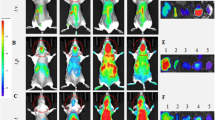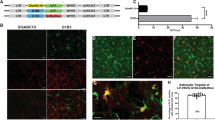Abstract
Nerve growth factor (NGF) is a potential therapeutic agent for Alzheimer's disease (AD) as it has positive effects on the basal forebrain cholinergic neurons whose degeneration correlates with the cognitive decline in AD. We have previously described an encapsulated cell biodelivery device, NsG0202, capable of local delivery of NGF by a genetically modified human cell line, NGC-0295. The NsG0202 devices have shown promising safety and therapeutic results in a small phase 1b clinical study. However, results also show that the NGF dose could advantageously be increased. We have used the sleeping beauty transposon expression technology to establish a new clinical grade cell line, NGC0211, with at least 10 times higher NGF production than that of NGC-0295. To test whether encapsulation of this cell line provides a relevant dose escalation step in delivering NGF for treatment of the cognitive decline in AD patients, we have validated the bioactivity of devices with NGC0211 and NGC-0295 cells in normal rat striatum as well as in the quinolinic acid striatal lesion model. These preclinical animal studies show that implantation of devices with NGC0211 cells lead to significantly higher NGF output, which in both cases correlate with highly improved potency.
This is a preview of subscription content, access via your institution
Access options
Subscribe to this journal
Receive 12 print issues and online access
$259.00 per year
only $21.58 per issue
Buy this article
- Purchase on Springer Link
- Instant access to full article PDF
Prices may be subject to local taxes which are calculated during checkout





Similar content being viewed by others
References
Jonhagen ME . Nerve growth factor treatment in dementia. Alzheimer Dis Assoc Disord 2000; 14 (Suppl 1): S31–S38.
Rosenberg MB, Friedmann T, Robertson RC, Tuszynski M, Wolff JA, Breakefield XO et al. Grafting genetically modified cells to the damaged brain: restorative effects of NGF expression. Science 1988; 242: 1575–1578.
Koliatsos VE, Clatterbuck RE, Nauta HJ, Knusel B, Burton LE, Hefti FF et al. Human nerve growth factor prevents degeneration of basal forebrain cholinergic neurons in primates. Ann Neurol 1991; 30: 831–840.
Kordower JH, Winn SR, Liu YT, Mufson EJ, Sladek Jr JR, Hammang JP et al. The aged monkey basal forebrain: rescue and sprouting of axotomized basal forebrain neurons after grafts of encapsulated cells secreting human nerve growth factor. Proc Natl Acad Sci USA 1994; 91: 10898–10902.
Martinez-Serrano A, Fischer W, Soderstrom S, Ebendal T, Bjorklund A . Long-term functional recovery from age-induced spatial memory impairments by nerve growth factor gene transfer to the rat basal forebrain. Proc Natl Acad Sci USA 1996; 93: 6355–6360.
Conner JM, Darracq MA, Roberts J, Tuszynski MH . Nontropic actions of neurotrophins: subcortical nerve growth factor gene delivery reverses age-related degeneration of primate cortical cholinergic innervation. Proc Natl Acad Sci USA 2001; 98: 1941–1946.
Tuszynski MH, Grill R, Jones LL, McKay HM, Blesch A . Spontaneous and augmented growth of axons in the primate spinal cord: effects of local injury and nerve growth factor-secreting cell grafts. J Comp Neurol 2002; 449: 88–101.
Li LY, Li JT, Wu QY, Li J, Feng ZT, Liu S et al. Transplantation of NGF-gene-modified bone marrow stromal cells into a rat model of Alzheimer’ disease. J Mol Neurosci 2008; 34: 157–163.
Salehi A, Delcroix JD, Swaab DF . Alzheimer's disease and NGF signaling. J Neural Transm 2004; 111: 323–345.
Lindvall O, Wahlberg LU . Encapsulated cell biodelivery of GDNF: a novel clinical strategy for neuroprotection and neuroregeneration in Parkinson's disease? Exp Neurol 2008; 209: 82–88.
Hoffman D, Breakefield XO, Short MP, Aebischer P . Transplantation of a polymer-encapsulated cell line genetically engineered to release NGF. Exp Neurol 1993; 122: 100–106.
Emerich DF, Winn SR, Harper J, Hammang JP, Baetge EE, Kordower JH . Implants of polymer-encapsulated human NGF-secreting cells in the nonhuman primate: rescue and sprouting of degenerating cholinergic basal forebrain neurons. J Comp Neurol 1994; 349: 148–164.
Lindner MD, Kearns CE, Winn SR, Frydel B, Emerich DF . Effects of intraventricular encapsulated hNGF-secreting fibroblasts in aged rats. Cell Transplant 1996; 5: 205–223.
Winn SR, Hammang JP, Emerich DF, Lee A, Palmiter RD, Baetge EE . Polymer-encapsulated cells genetically modified to secrete human nerve growth factor promote the survival of axotomized septal cholinergic neurons. Proc Natl Acad Sci USA 1994; 91: 2324–2328.
Fjord-Larsen L, Kusk P, Tornoe J, Juliusson B, Torp M, Bjarkam CR et al. Long-term delivery of nerve growth factor by encapsulated cell biodelivery in the Gottingen minipig basal forebrain. Mol Ther 2010; 18: 2164–2172.
Dunn KC, Aotaki-Keen AE, Putkey FR, Hjelmeland LM . ARPE-19, a human retinal pigment epithelial cell line with differentiated properties. Exp Eye Res 1996; 62: 155–169.
Ivics Z, Hackett PB, Plasterk RH, Izsvak Z . Molecular reconstruction of sleeping beauty, a Tc1-like transposon from fish, and its transposition in human cells. Cell 1997; 91: 501–510.
Ivics Z, Izsvak Z . The expanding universe of transposon technologies for gene and cell engineering. Mob DNA 2010; 1: 25.
Hui EK, Wang PC, Lo SJ . Strategies for cloning unknown cellular flanking DNA sequences from foreign integrants. Cell Mol Life Sci 1998; 54: 1403–1411.
Klein RL, Hirko AC, Meyers CA, Grimes JR, Muzyczka N, Meyer EM . NGF gene transfer to intrinsic basal forebrain neurons increases cholinergic cell size and protects from age-related, spatial memory deficits in middle-aged rats. Brain Res 2000; 875: 144–151.
Bishop KM, Hofer EK, Mehta A, Ramirez A, Sun L, Tuszynski M et al. Therapeutic potential of CERE-110 (AAV2-NGF): targeted, stable, and sustained NGF delivery and trophic activity on rodent basal forebrain cholinergic neurons. Exp Neurol 2008; 211: 574–584.
Kordower JH, Chen EY, Mufson EJ, Winn SR, Emerich DF . Intrastriatal implants of polymer encapsulated cells genetically modified to secrete human nerve growth factor: trophic effects upon cholinergic and noncholinergic striatal neurons. Neuroscience 1996; 72: 63–77.
Frim DM, Uhler TA, Short MP, Ezzedine ZD, Klagsbrun M, Breakefield XO et al. Effects of biologically delivered NGF, BDNF and bFGF on striatal excitotoxic lesions. Neuroreport 1993; 4: 367–370.
Emerich DF, Hammang JP, Baetge EE, Winn SR . Implantation of polymer-encapsulated human nerve growth factor-secreting fibroblasts attenuates the behavioral and neuropathological consequences of quinolinic acid injections into rodent striatum. Exp Neurol 1994; 130: 141–150.
Emerich DF, Mooney DJ, Storrie H, Babu RS, Kordower JH . Injectable hydrogels providing sustained delivery of vascular endothelial growth factor are neuroprotective in a rat model of Huntington's disease. Neurotox Res 2010; 17: 66–74.
Jørgensen JR, Emerich DF, Thanos C, Thompson LH, Torp M, Bintz B et al. Lentiviral delivery of Meteorin protects striatal neurons against excitotoxicity and reverses motor deficits in the quinolinic acid rat model. Neurobiol Dis 2011; 41: 160–168.
Mullen RJ, Buck CR, Smith AM . NeuN, a neuronal specific nuclear protein in vertebrates. Development 1992; 116: 201–211.
Grabundzija I, Irgang M, Mates L, Belay E, Matrai J, Gogol-Doring A et al. Comparative analysis of transposable element vector systems in human cells. Mol Ther 2010; 18: 1200–1209.
Ting KK, Brew BJ, Guillemin GJ . Effect of quinolinic acid on human astrocytes morphology and functions: implications in Alzheimer's disease. J Neuroinflammation 2009; 6: 36.
Rahman A, Ting K, Cullen KM, Braidy N, Brew BJ, Guillemin GJ . The excitotoxin quinolinic acid induces tau phosphorylation in human neurons. PLoS One 2009; 4: e6344.
Montero CN, Hefti F . Rescue of lesioned septal cholinergic neurons by nerve growth factor: specificity and requirement for chronic treatment. J Neurosci 1988; 8: 2986–2999.
Niewiadomska G, Komorowski S, Baksalerska-Pazera M . Amelioration of cholinergic neurons dysfunction in aged rats depends on the continuous supply of NGF. Neurobiol Aging 2002; 23: 601–613.
Good PF, Werner P, Hsu A, Olanow CW, Perl DP . Evidence of neuronal oxidative damage in Alzheimer's disease. Am J Pathol 1996; 149: 21–28.
Butterfield DA, Perluigi M, Sultana R . Oxidative stress in Alzheimer's disease brain: new insights from redox proteomics. Eur J Pharmacol 2006; 545: 39–50.
Heneka MT, O’Banion MK, Terwel D, Kummer MP . Neuroinflammatory processes in Alzheimer's disease. J Neural Transm 2010; 117: 919–947.
Fjord-Larsen L, Johansen JL, Kusk P, Tornøe J, Gronborg M, Rosenblad C et al. Efficient in vivo protection of nigral dopaminergic neurons by lentiviral gene transfer of a modified Neurturin construct. Exp Neurol 2005; 195: 49–60.
Demeure K, Quinton L, Gabelica V, De PE . Rational selection of the optimum MALDI matrix for top-down proteomics by in-source decay. Anal Chem 2007; 79: 8678–8685.
Acknowledgements
We wish to thank Dr Zsuzsanna Izsvák and Dr Zoltán Ivics for introducing us to the sleeping beauty transposon system as well as the generous assistance with NGF copy number determination. We thank Helle Nymark, Janni Larsen, Juliano Olsen, Marianne Kureer, Pia Knudsen, Hanne Fosmark and Helle T Wassmann for excellent technical assistance with cells and devices. Also, the technical assistance by Allan Kastrup with NGF purification and mass spectrometry analysis is highly appreciated.
Author information
Authors and Affiliations
Corresponding author
Ethics declarations
Competing interests
LF-L, PK, JT, MT and LUW are employed by NsGene A/S. This study was funded by NsGene A/S.
Rights and permissions
About this article
Cite this article
Fjord-Larsen, L., Kusk, P., Emerich, D. et al. Increased encapsulated cell biodelivery of nerve growth factor in the brain by transposon-mediated gene transfer. Gene Ther 19, 1010–1017 (2012). https://doi.org/10.1038/gt.2011.178
Received:
Revised:
Accepted:
Published:
Issue Date:
DOI: https://doi.org/10.1038/gt.2011.178
Keywords
This article is cited by
-
Feasibility and therapeutical potential of local intracerebral encapsulated cell biodelivery of BDNF to AppNL−G−F knock-in Alzheimer mice
Alzheimer's Research & Therapy (2023)
-
Unilateral ex vivo gene therapy by GDNF in epileptic rats
Gene Therapy (2019)
-
Targeted delivery of nerve growth factor to the cholinergic basal forebrain of Alzheimer’s disease patients: application of a second-generation encapsulated cell biodelivery device
Alzheimer's Research & Therapy (2016)
-
Combination of Aβ clearance and neurotrophic factors as a potential treatment for Alzheimer’s disease
Neuroscience Bulletin (2013)



